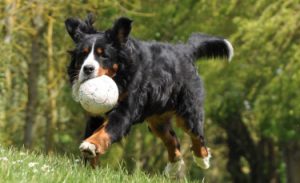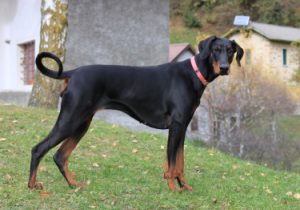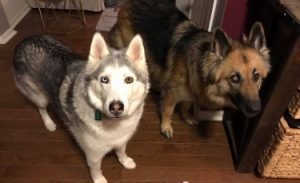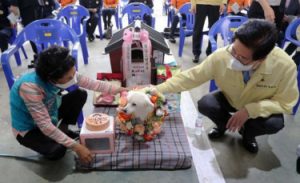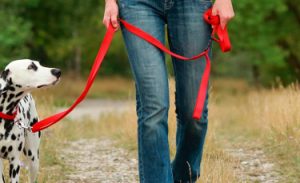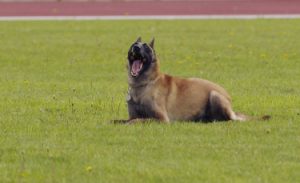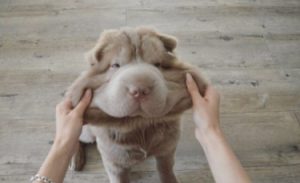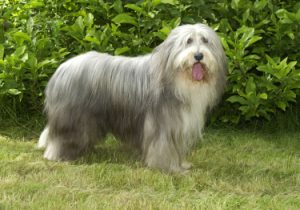<!–
–>
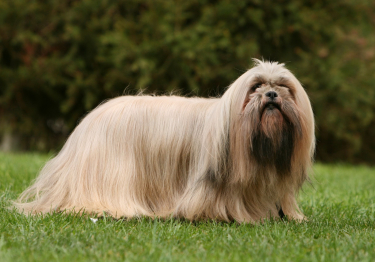
Hypoallergenic breed
| Long | |
| Tibet | |
| Small | |
| Round |
| Sex | Weight | Cut |
|---|---|---|
| Female | From 4 kg to 6 kg | From 18 cm to 28 cm |
| Male | From 5 kg to 7 kg | From 20 cm to 30 cm |
History of the breed
Originally from Tibet, the Lhasa Apso was traditionally bred in Buddhist monasteries and villages surrounding Lhasa , the Tibetan capital (hence its name).
This very old breed was not introduced to Europe until the beginning of the 20th century ; the first dogs arrived in Britain in the 1920s , where a breed club for the Lhasa Apso was founded the following decade.
Resulting from the cross between the Tibetan Terrier and the Tibetan Spaniel, the Lhasa Apso saw its standard established in 1987.
Lhasa Apso Pictures
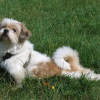
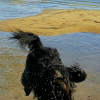
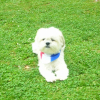
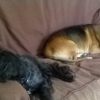
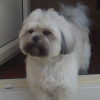

View all photos of Lhasa Apso from Woopets members
Physical features
His hair : long, abundant, straight and hard, without being woolly or silky. The undercoat is medium.
Its color : can be golden, sand, honey, dark gray, slate, smoke, particolor (several distinct colors), black, white or brownish.
His head : the skull is moderately narrow and receding behind the eyes. Not quite flat, the head is not domed either. The stop is average.
His ears : hanging down, with abundant fringes.
His eyes : oval in shape, medium in size and dark in color, without any visible white either at the base or at the top of the eye.
His body : well-proportioned, compact, with a straight top line to the back, a strong kidney and ribs extending well back.
Its tail : well furnished with hair, it is set high and carried on the back. The tail may have a knot at its end.
Behavior and character
| Affectionate | |
|---|---|
| Calm | |
| Protective | |
| Independent | |
| Hunter | |
| Barks / howls |
Behavior with others
| Cohabitation with children | |
|---|---|
| Sociable with other animals | |
| Love strangers |
Like most apartment dogs, the Lhasa Apso is often jovial, lively and very playful. Attached to his masters, he is very protective of them and shows mistrust of strangers . He also shows himself to his advantage as an alarm dog, since no intrusion escapes his surveillance.
Its characteristic bark, which is more like a larger dog, is appreciated in this area. The Lhasa Apso is suitable for children , for its playful temperament, as well as for the elderly , with whom it knows how to stay calm .
The Lhasa Apso
is it right for you? Take the test!
Education
| Clever | |
|---|---|
| Obedient |
If the Lhasa Apso has been properly educated and socialized, all should be well with his congeners and the other animals in the house. His upbringing must be firm , but fair , so as to temper his very strong protective instinct. He needs more to be praised for his good deeds than to be scolded for doing something stupid.
Living conditions
| Suitable for apartment living | |
|---|---|
| Good for new masters | |
| Love it hot | |
| Love the cold |
The Lhasa Apso is truly a house dog , despite its past as a rustic dog living in the most extreme climatic conditions on the Tibetan heights. He is therefore perfectly suited to city life, can get used to being home alone while you are at work and will be very enthusiastic when going for his daily walk. The Lhasa Apso is therefore an excellent companion, while being a first-rate alarm dog.
Health
| Solid | |
|---|---|
| Ease of gaining weight |
Rustic and resistant, the Lhasa Apso is not particularly prone to any disease. Thanks to its very thick coat, it supports the lowest temperatures and is protected from the sun. Nevertheless, it is recommended to monitor and clean his floppy ears on a regular basis in order to prevent infections.
Hypoallergenic breed
Yes
Litter size
Between 4 and 6 puppies
To protect you from these risks and insure your companion in the event of health problems, Woopets recommends Lhasa Apso dog insurance .

function showAssuranceForm () {var siteReferer = var id_race_association = ‘206’; //console.log(id_race_association);success: function (html) {}});}document.addEventListener (‘DOMContentLoaded’, () => {$ (‘# assuranceModalBanner’). on (‘show.bs.modal’, function (event) {showAssuranceForm ();});});
Life expectancy
Minimum: 12 years old
Maximum: 14 years
The life expectancy of a Lhasa Apso is, on average, between 12 years and 14 years.
Calculate the human age of your Lhasa Apso!
To choose… 1 year 2 years 3 years Four years 5 years 6 years 7 years 8 years 9 years 10 years 11 years old 12 years 13 years 14 years old 15 years old 16 years old 17 years 18 years old 19 years old 20 years 21 years old
Maintenance and hygiene
| Ease of maintenance | |
|---|---|
| Cost of maintenance | |
| Hair loss |
| Drool level | |
|---|---|
| Ease of grooming |
The Lhasa Apso requires careful and regular maintenance , because the density of its hairs makes it more likely to get dirty. In dogs with very long fringes, one must be careful of the knots that tend to form.
Regular brushing of the dog with a small, soft brush is recommended. It may be necessary to provide an antistatic detangling spray , as well as a cleaning lotion for the ears . The robe of the Lhasa Apso being particularly furnished, a bath must be given to him every month or so .
Price and budget
Purchase price
Mini
1000 € Maxi
1500 €
The purchase price of a Lhasa Apso is between 1000 € and 1500 €.
Annual maintenance cost
Mini
900 € Maxi
950 €
The annual maintenance cost of a Lhasa Apso is between 900 € and 950 €.
No name is currently proposed. Use our tool to find the name of your Lhasa Apso!
Food
His diet is mainly composed of high quality kibble . Do not hesitate to contact a veterinarian to agree on the best possible dosage. The latter must be related to the daily energy expenditure of this canine.
Want the best for your dog?
Create tailor-made food for your Lhasa Apso
I discover !
PROMO -30% | Delivered to you!

Physical activity
| Athletic | |
|---|---|
| Energy level | |
| Potential to play |
Enjoying naps as much as taking walks, the Lhasa Apso needs daily outings and a little exercise to thrive.
Others
| Master character <span class="btnTooltip qTip2" title="- Calm: the master must be gentle and know how to show patience. – Active: the owner must be energetic and dynamic to live in harmony with his dog. – Hyperactive: the owner must be stimulating and very restless to suit the temperament of his dog.”> |
Calm |
|---|


